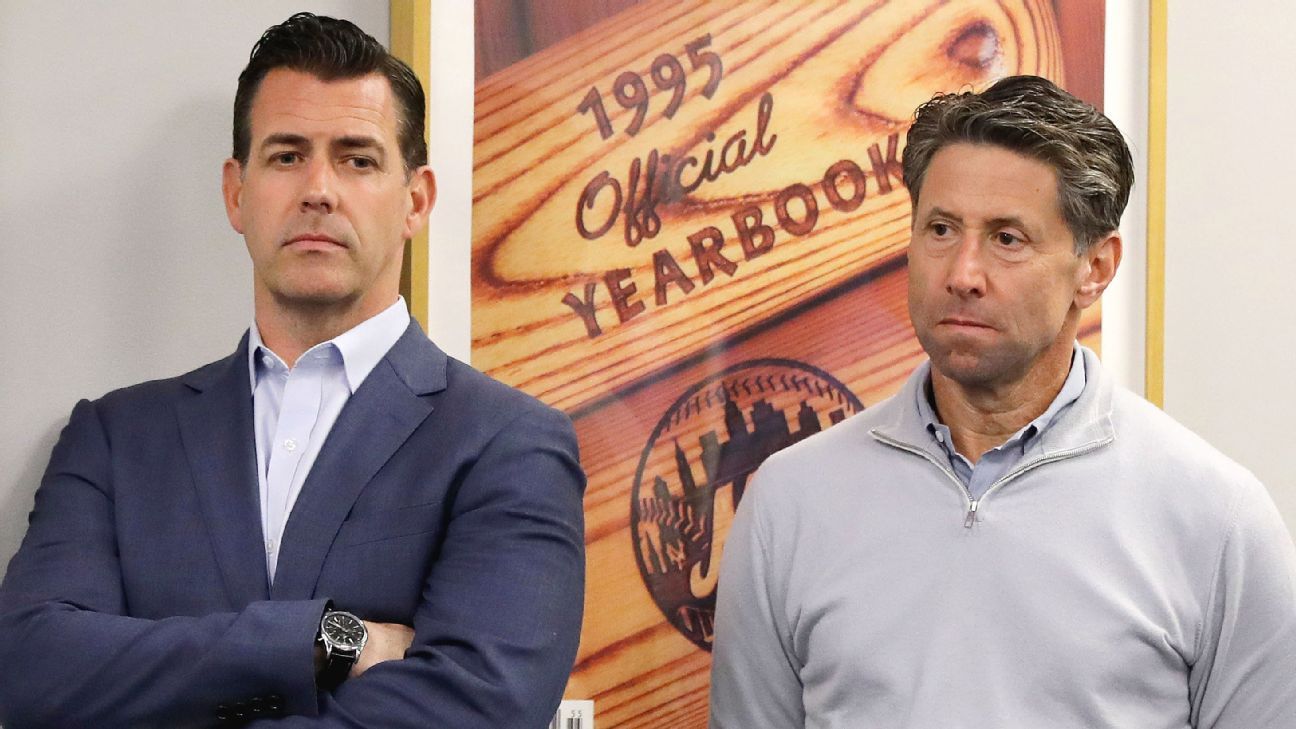The New York Mets, a multibillion-dollar corporation that moonlights as a comedy act, put on their finest show in years Monday. Rampant speculation about the job security of their embattled manager amid a sweep by baseball’s worst team was merely the opening set. Then their first-year general manager announced that Yoenis Cespedes, their highest-paid player who already was on the injured list, had broken his ankle when he stepped in a hole at his ranch, and it was as though Heisenberg had cooked up this batch of news, because it was pure Mets, blue to the core.
The Mets habitually step in something else typically found on a ranch, and while some of their pratfalls can be chalked up to bad luck, enough are self-inflicted that they earn the scorn from fans and the schadenfreude from around the game. All of it is interconnected, from the losing to the managerial drama to the $29 million player rehabbing at his horse farm who says he didn’t suffer multiple fractures in his right ankle due to an accident with a horse but rather an unfortunate dalliance with a hole.
It starts with owner Fred Wilpon and his son and chief operating officer, Jeff, the hub of everything Mets-related. Ownership did not give the new GM, Brodie Van Wagenen, the ability to hire his own manager, lame-ducking incumbent Mickey Callaway before the 2019 season even began. Ownership does not take the tens of millions of dollars collected via insurance money from Cespedes’ and David Wright’s injuries and reinvest it in major league payroll. Ownership for years has fomented organizational instability, and what to other franchises might register as tiny cracks in the foundation feel to the Mets like canyon-sized fissures.
And so there are days like Monday, when the Mets played arsonist and fire department simultaneously. Van Wagenen did his best to downplay the absurdity of it all, treating Cespedes’ injury with understandable gravity and giving Callaway a vote of confidence following the Mets managing three hits over the weekend against the woeful Miami Marlins. It was a tepid vote, one without conditions, the sort one offers to buy time for some proper replacement back-channeling.
Multiple sources familiar with the team’s thinking believe it will take an extreme turnaround to save Callaway’s job, predicting his firing will happen sometime in June. In his first season last year, Callaway oversaw a 66-84 finish following an 11-1 start. He did not distinguish himself tactically, either, and Van Wagenen’s hiring signaled an opportunity to start fresh on the field too. These are the Mets, of course, and $2 million remained on Callaway’s deal, so that opportunity was sacrificed.
The Mets do a lot of senseless things because of money. The hiring of Van Wagenen, whose aggressive plan helped win over ownership, was the Mets’ way of saying: It’s time to build, not rebuild. They traded top prospects for Edwin Diaz and Robinson Cano. They dropped some cash in free agency. And … they stopped. With clear holes and available free agents to plug them, the Mets believed themselves good enough. And how could fans complain about an Opening Day payroll of $158 million, the club’s highest ever?
Here’s how: It’s not $158 million. It’s not close. The Mets have insurance that recoups 75 percent of Wright’s and Cespedes’ salaries if disabled because of injury. Wright is essentially retired. Cespedes underwent surgery on both his heels last year, and his return at all this season was in question. Between them, the Mets could collect upward of $33 million in insurance money.
So that $158 million payroll? It’s actually $125 million. Top 10 in the game? Not even top half. The Seattle Mariners are paying out more than the Mets. They’re rebuilding. The Milwaukee Brewers are paying out more than the Mets. They’re located in Milwaukee, not New York. The Mets are the Ferdinands of baseball. They should be big bullies. They’d rather just go to the ranch and step in holes.
Now, it’s worth noting that spending clearly does not solve every ill. The Cespedes deal is a disaster. The Jed Lowrie and Wilson Ramos deals from this winter look like messes. Cano will cost the Mets more than $20 million for the next four years, and as the team failed to put up a single run Sunday, he couldn’t be bothered to run out a tapper that wound up a double play.
In the aftermath of that loss, pitcher Noah Syndergaard passionately defended Callaway, which was noble. And yet however powerful Syndergaard’s words, it is the players’ actions that will render judgment on Callaway’s job. And with the Mets in the midst of a funk, with the manager’s job quite clearly in peril, for a player to exhibit the sheer lack of effort Cano did illustrates a famine of awareness, a silent indictment of Callaway — or perhaps both.
The double play put a bow on Sunday’s shutout, which led to the Monday media conference, which served not as a sense into the Mets’ psyche at the moment but how the organization cares to spin a team that entered the day 20-25 and occupying third place in the National League East. At one point, Van Wagenen actually uttered the words, “I don’t have regrets from this offseason,” and if he had unbuttoned his shirt, opened his collar and revealed a tattoo across his chest that said “NO RAGRETS,” no one would’ve blinked an eye.
These are the Mets. These sorts of things happen, and they are funny, or at least funny to those who don’t suffer through season after season of the same mistakes. Those fans see rookie sensation Pete Alonso, hitting savant Jeff McNeil, steady outfielder Michael Conforto and athletic shortstop Amed Rosario, and think: That’s a plenty solid core. And they see Syndergaard and Jacob deGrom and Steven Matz and Zack Wheeler, and say: That’s a pretty good rotation, too. And then when a bad patch hits, it gets amplified because there are so many things to question — not allowing Van Wagenen his own manager, and forcing Ramos to catch deGrom when deGrom clearly is more comfortable pitching to Tomas Nido, and thinking $125 million is going to be enough to beat Philadelphia and Atlanta and Washington, let alone the rest of the NL and the best of the American League.
And that’s the point, right? That the Mets should exist to win championships, to erase the three decades since their last one? That every little decision should lead to that goal? That should be the point, but then the New York Mets and “should” have something of a toxic relationship, with the former telling the latter to go kick rocks — or step in a hole.
No, the Mets do things the Mets way, and after all the disappointment, one would think the processes might change. Not under an ownership regime that has failed to learn from its mistakes. So whatever bad luck crops up, it gets swept away in a deluge of issues that long preceded those who arrived to cure the Mets’ ills. Mickey Callaway was one of those people, taking over after Terry Collins got run out of town following what felt like two years of lame-duckery himself, and he’ll ride that same wave eventually.
Some of it is bad luck and some of it bad timing and some of it just baseball, and all of those things showed themselves Monday, when the Mets beat the Nationals, 5-3. Callaway was no better a manager, the Mets no better a team, baseball no different a game. It was, in fact, the perfect capper to the most Mets day in a good while. A manager still employed for the wrong reasons, a GM standing by what he did for questionable reasons and an ownership group dead silent throughout it all, content to let this multibillion-dollar corporation flop about like a fish on the dock. So sad, it’s funny. So funny, it’s sad.

